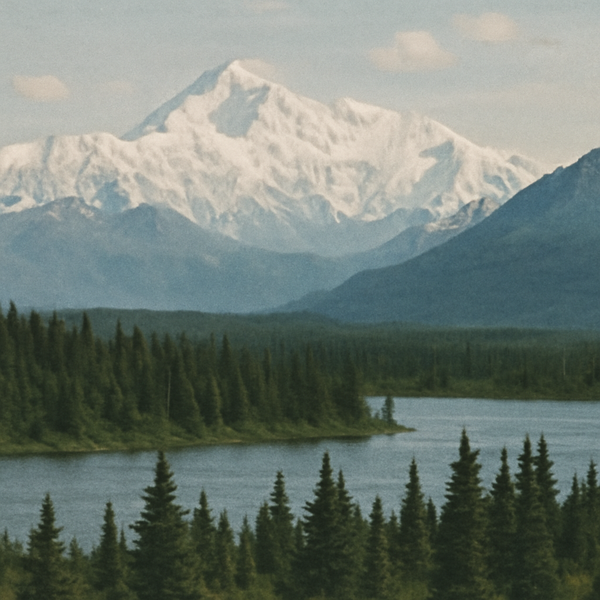Alaska: The Last Frontier – A Comprehensive Overview
Introduction
Alaska, commonly known as "The Last Frontier," is the largest and one of the most fascinating states in the United States. Connected to the North American mainland only through Canada, this remarkable region boasts a unique combination of vast wilderness, diverse wildlife, rich indigenous cultures, and a dramatic history of exploration and settlement. This article delves into the geography, history, economy, culture, and key facts about Alaska, supplemented with tables and statistics for a deeper understanding.
Geographical Overview
Alaska is situated in the northwesternmost region of North America. Bordered by Canada to the east, the Arctic Ocean to the north, and the Pacific Ocean to the south and west, Alaska is separated from the contiguous United States by Canada’s province of British Columbia and the Yukon Territory. Its strategic position places it close to Russia—separated only by the narrow Bering Strait.
Table 1: General Geographical Data
| Attribute | Value |
|---|---|
| Area | 663,267 sq mi (1,717,856 km²) |
| Coastline | 6,640 mi (10,686 km) |
| Highest Point | Denali – 20,310 ft (6,190 m) |
| Largest City | Anchorage |
| Capital City | Juneau |
| Population (2023 est.) | ~730,000 |
| Time Zones | Alaska, Hawaii-Aleutian |
Alaska is renowned for its incredible natural landscapes, including mountain ranges (the Alaska Range, Brooks Range), thousands of rivers and lakes, volcanic islands, and expansive forests.
Climate and Ecology
Alaska has a varied climate:
- Southeast Alaska: Maritime climate with mild, wet conditions.
- Interior Alaska: Continental climate with cold winters and warm summers.
- Northern/Arctic Alaska: Polar climate, extremely cold winters and cool summers.
The state is rich with flora and fauna. Its diverse ecosystems include temperate rainforests, tundra, and boreal forests, supporting animals like brown bears, moose, bald eagles, and whales.
Historical Background
Indigenous Peoples
Before European exploration, Alaska was inhabited for thousands of years by various indigenous groups, including the Inupiaq, Yup’ik, Aleut, Tlingit, Haida, and Athabascan peoples. These communities developed rich traditions adapted to Alaska's challenging environment.
European Colonization
The first Europeans to arrive were Russian explorers in the 18th century, establishing towns and trade in fur and sea otters. The Russian Empire sold Alaska to the United States in 1867 for $7.2 million—often referred to as "Seward's Folly," after then-Secretary of State William H. Seward.
Becoming a State
Alaska formally became the 49th state of the United States on January 3, 1959. Statehood brought increased political attention and federal investment, especially after the discovery of oil.
Economy
Alaska’s economy is dominated by:
- Oil and Gas: The Trans-Alaska Pipeline System delivers oil from Prudhoe Bay to Valdez. Oil taxes provide a significant portion of state revenue.
- Fishing: Alaska is America’s largest producer of wild-caught seafood.
- Tourism: Scenic beauty and adventure travel draw over 2 million visitors annually.
- Other sectors: Forestry, mining, and a growing renewable energy sector.
Table 2: Major Economic Sectors in Alaska
| Sector | Contribution (2020) | Key Products/Notes |
|---|---|---|
| Oil & Gas | ~47% (of GDP) | Crude oil, natural gas |
| Fishing | ~80,000 jobs | Salmon, halibut, crab |
| Tourism | ~2 million visitors | Cruises, adventure travel |
| Mining | Gold, zinc, coal | Red Dog Mine (zinc) |
Demographics and Urban Centers
While Alaska is vast, its population is small and mostly concentrated in a handful of cities and towns. Anchorage is the largest city, followed by Fairbanks and Juneau.
Table 3: Largest Cities in Alaska (2023 Estimates)
| City | Population | Key Characteristics |
|---|---|---|
| Anchorage | ~290,000 | Financial & transport hub |
| Fairbanks | ~32,000 | University, military, tourism |
| Juneau | ~32,000 | State capital, government |
| Wasilla | ~11,500 | Fast-growing suburb |
| Sitka | ~8,500 | Historic, fishing port |
Culture and Society
Alaska’s cultural landscape is a blend of indigenous heritage and influences from Russian and American settlers. Native Alaskan art, music, and dance remain vital aspects of community life. The annual Iditarod Trail Sled Dog Race is a proud tradition, symbolizing history and grit.
Tourism supports local arts, crafts, and demonstrations of indigenous ways of life. Subsistence activities—such as hunting, fishing, and berry-picking—are still crucial, especially for those living in remote villages.
Challenges and Opportunities
Climatic and Environmental Risks
Alaska faces significant challenges associated with climate change:
- Permafrost thaw threatens infrastructure.
- Coastal erosion jeopardizes communities.
- Wildlife habitats are changing.
Socio-Economic Issues
Rural isolation, high cost of living, logistical challenges, and a reliance on oil revenue pose hurdles. Investments in renewable energy, technology, and infrastructure are seen as keys to future resilience.
Tourism Highlights
Alaska is a haven for outdoor enthusiasts. Top attractions include:
- Denali National Park: Home to North America’s highest peak.
- Glacier Bay National Park: Pristine glaciers and whale-watching.
- Kenai Fjords: Glacial landscapes and marine wildlife.
- Northern Lights: Particularly vivid during winter.
Table 4: Top Tourist Attractions in Alaska
| Attraction | Location | Highlight |
|---|---|---|
| Denali NP | Interior Alaska | Mountaineering, wildlife |
| Glacier Bay NP | Southeast Alaska | Glaciers, cruises |
| Kenai Fjords NP | Southcentral | Kayaking, glaciers |
| Wrangell-St. Elias | Southeast/Interior | Largest U.S. national park |
| Mendenhall Glacier | Juneau | Accessible glacier hikes |
Conclusion
Alaska stands as a symbol of adventure, resilience, and untamed beauty. Its landscapes are as varied as its cultures, offering a window into the Earth’s past and a frontier for the future. Whether viewed through the lens of history, economy, or natural wonder, Alaska occupies a distinctive place in both the American imagination and the global tapestry.
Fun Fact: Alaska has more coastline than the rest of the United States combined!
References available upon request. For updated statistics and travel information, consult the State of Alaska’s official website and the U.S. Census Bureau.
